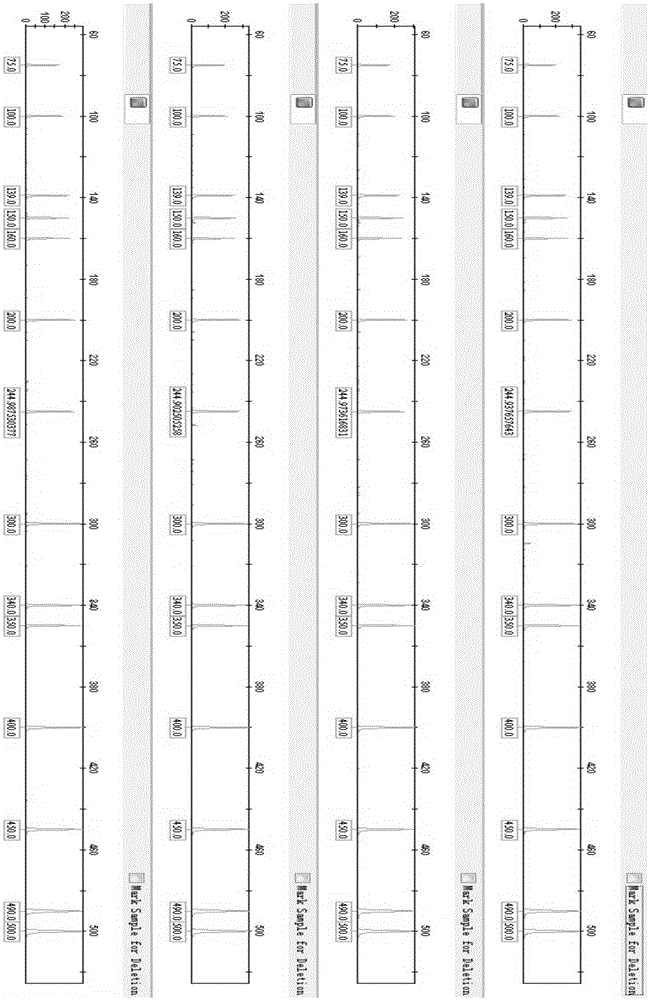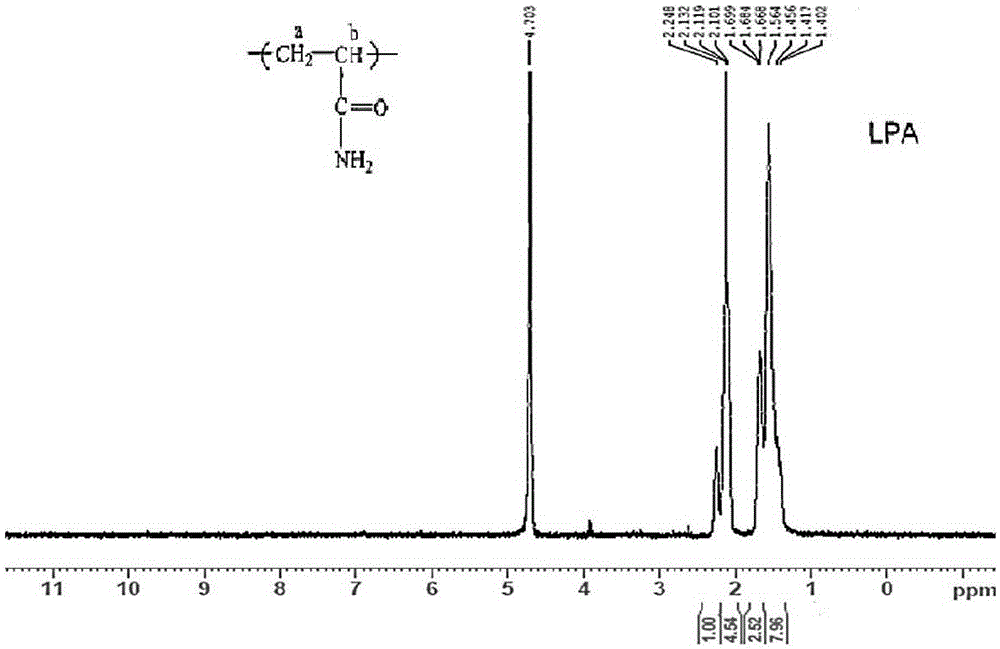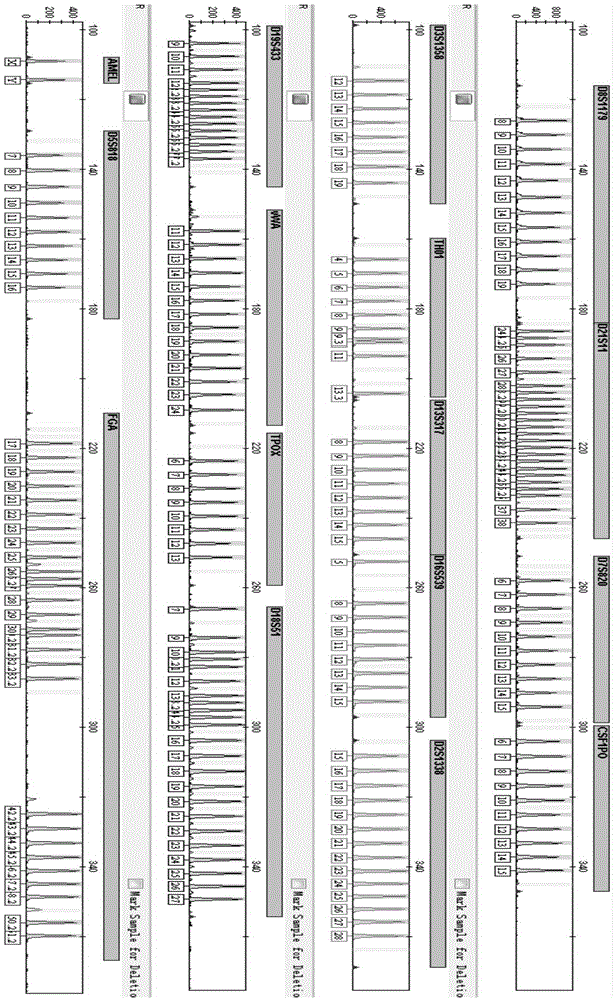Non-gel sieving medium for capillary electrophoresis and preparation method thereof
A technology of capillary electrophoresis and sieving, which is applied in biochemical equipment and methods, DNA preparation, microbial measurement/inspection, etc. It can solve the problems of low resolution and poor stability, and achieve high hydrophilicity, low viscosity, and reduced The effect of adsorption
- Summary
- Abstract
- Description
- Claims
- Application Information
AI Technical Summary
Problems solved by technology
Method used
Image
Examples
Embodiment 1
[0030] A kind of glue-free sieving medium for capillary electrophoresis provided by the present invention comprises polymer monomer, solvent, chain transfer agent, initiator and catalyst, described polymer monomer is acrylamide, and described solvent is Deionized water, the chain transfer agent is Virahol, the initiator is ammonium persulfate (APS), the catalyst is N,N,N,N-tetramethyldiethylamine (TEMED), the The ratio of acrylamide, deionized water, isopropanol, ammonium persulfate (APS) and N,N,N,N-tetramethyldiethylamine (TEMED) is (20-30)g: (180-270 )ml: (5.24-7.86)ml: (1.0-2.0)ml: (1.0-2.0)ml, to obtain a glue-free sieving medium, the acrylamide, deionized water, isopropanol, ammonium persulfate (APS) The ratio of N,N,N,N-tetramethyldiethylamine (TEMED) is 25g: 222ml: 6.55ml: 1.25ml: 1.25ml, preferably. Described glue-free sieving medium is polyacrylamide (LPA), and structural formula is as follows:
[0031]
[0032] The present invention also provides a preparation ...
Embodiment 2
[0038] In this example, the reagents used are mainly from Sigma-Aldrich Company (USA). The specific operation is prepared according to the following steps: add 222ml of deionized water and 6.55ml of isopropanol (analytical grade) to a round bottom flask, and feed high-purity nitrogen (99.99%) at 35°C to deoxygenate the solution for 10 minutes. Then add 25g of acrylamide (AM), 1.25ml of 10% (v / v) N,N,N,N-tetramethyldiethylamine (TEMED) and 1.25ml of 10% (w / v) ammonium persulfate ( APS), magnetic stirring is carried out under 500rpm, and after reacting 90min, the solution is honey viscous. A dialysis bag (Spectra / por#2, Spectrum Corporation, USA) with a molecular weight cut-off of 12-14 KDa was selected for dialysis for three days. After dialysis, the polymer solution was freeze-dried at -60°C for 72 hours to obtain a white solid, which was the sieving medium, and the reaction yield was about 80%.
Embodiment 3
[0039] The characterization of embodiment 3 sieving media
[0040] 1 1 H-NMR spectrometer: use D 2 O was used as a solvent to characterize the polymer (white solid) as figure 1 shown. From figure 1 It can be seen that the structure of the polymer (polyacrylamide) is correct, and the purity is high, and it does not contain impurities such as monomers and solvents.
[0041] 2 Gel Permeation Chromatography (GPC): The polymer was subjected to WatersBreeze TM 2 HPLC system test and analysis, the column is WatersUltrahydrogelLinearColumn, the pump is Waters1515, the PDA detector, the mobile phase is water, the test results are shown in Table 1.
[0042] Table 1 Gel Permeation Chromatography (GPC) Test Results
[0043]
PUM
| Property | Measurement | Unit |
|---|---|---|
| molecular weight | aaaaa | aaaaa |
| molecular weight | aaaaa | aaaaa |
| length | aaaaa | aaaaa |
Abstract
Description
Claims
Application Information
 Login to view more
Login to view more - R&D Engineer
- R&D Manager
- IP Professional
- Industry Leading Data Capabilities
- Powerful AI technology
- Patent DNA Extraction
Browse by: Latest US Patents, China's latest patents, Technical Efficacy Thesaurus, Application Domain, Technology Topic.
© 2024 PatSnap. All rights reserved.Legal|Privacy policy|Modern Slavery Act Transparency Statement|Sitemap



